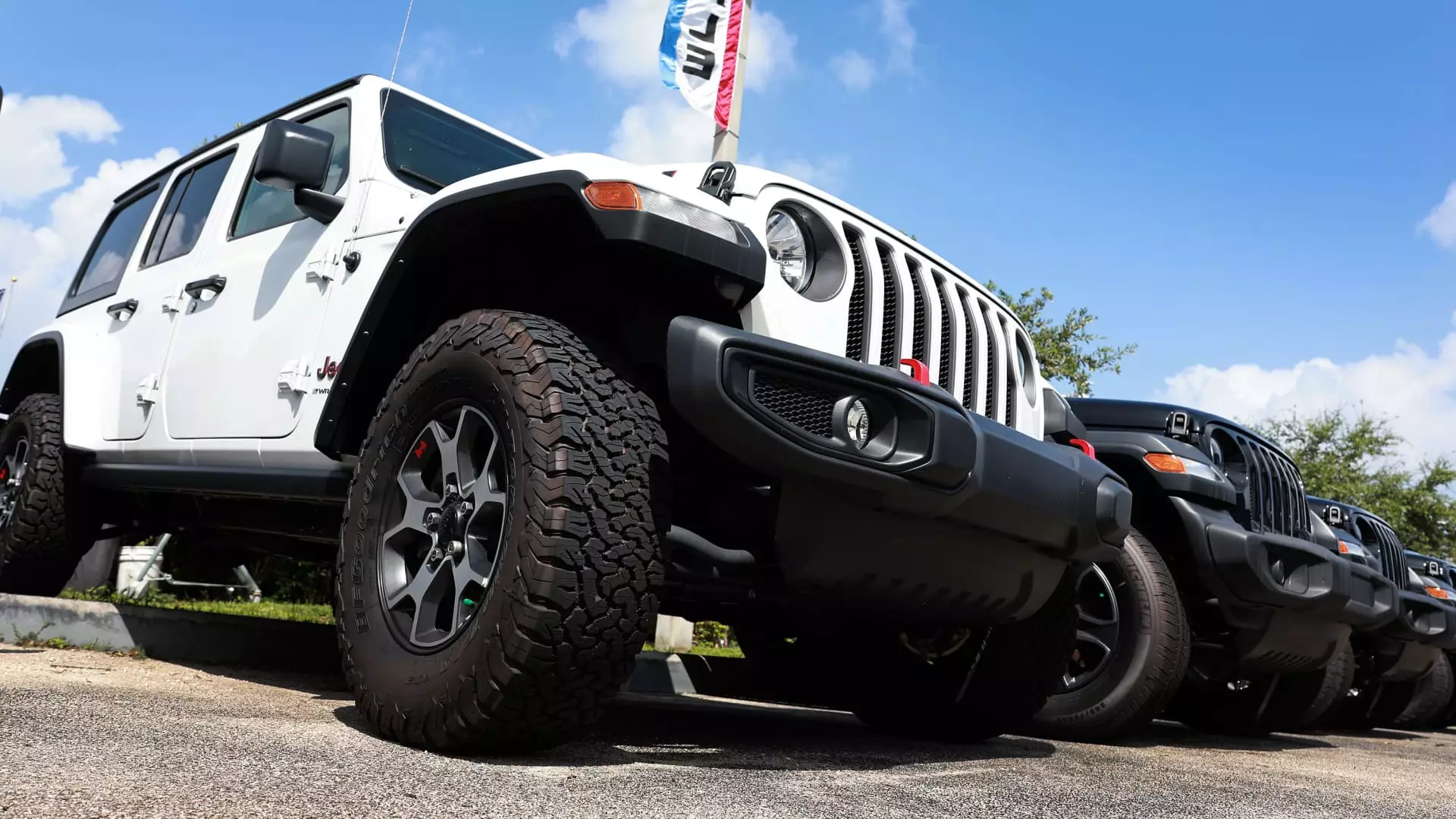The U.S. automotive market finds itself amidst a landscape of uncertainty as the third quarter of 2024 unfolds. As economic pressures mount, along with political instability and heightened financing costs, vehicle sales are predicted to experience a decline. Various industry analysts, including those from Cox Automotive and Edmunds.com, are projecting a drop of around 2% in sales volume compared to the previous year, bringing the total to approximately 3.9 million new vehicles sold. This situation represents a substantial 5% decrease from the second quarter of 2024, suggesting that the automotive sector is grappling with several impediments.
The Federal Reserve’s recent decision to reduce interest rates was seen as a positive move; however, it doesn’t automatically translate into a resurgence in auto sales. Charlie Chesbrough, a senior economist at Cox Automotive, remarked that ongoing inflation and other economic concerns are likely to impact consumer purchasing power adversely. “2024 has been a turbulent year for the automotive market, and we can expect more volatility in Q4,” Chesbrough noted. This unpredictability surrounding economic conditions is critically affecting buyer behavior, particularly when it comes to the affordability of new vehicles.
Affordability is a recurring theme across discussions about the current state of the automotive market. With the average transaction price for new vehicles hovering around $47,870, many consumers are finding it increasingly difficult to commit to a new purchase. This issue is heightened by the fact that consumers are, on average, financing around $40,000 for a vehicle. Jessica Caldwell, head of insights at Edmunds, emphasizes this concern by stating that the market simply may not be accessible to a significant portion of potential buyers. “The new vehicle market is quite limiting for a lot of buyers,” she remarked, encapsulating the widespread feeling of financial strain among consumers.
Industry forecasts provide a mix of optimism and concern. While general sales are anticipated to decrease in the short term, both Cox and Edmunds predict a robust recovery in 2024, estimating light-duty vehicle sales to total about 15.7 million units. This outlook is a slight adjustment from Cox’s earlier projections, which stood at 16 million. Although their predictions illustrate a more optimistic future, the immediate challenges—affordability and market access—remain hurdles that need addressing for these forecasts to materialize fully.
On the brighter side of the automotive landscape, certain automakers are poised for growth. Companies like Honda and Ford are among those expected to report sales increases in the third quarter, contrasting sharply with other manufacturers such as Stellantis, Toyota, and BMW, which are predicted to face considerable losses. Stellantis, in particular, is projected to see a staggering decline in sales, with forecasts suggesting a drop of around 21%. CEO Carlos Tavares has chosen to focus on profitability rather than sheer volume, particularly within vital brands like Jeep and Ram. This strategic pivot, however, has led to broader market share concerns.
As consumer interest in sustainability surges, sales of electric vehicles (EVs) are expected to see a growth spurt of roughly 8% compared to last year. However, EV sales are still slower than market expectations, particularly for Tesla, which has dominated the segment for years. Notably, Tesla’s market share is anticipated to dip below 50% for the second consecutive quarter, indicating that competition is intensifying in the EV space.
The rise in electric vehicle sales has been bolstered by considerable incentives, which are now approaching an average of 13.3% of the vehicle’s total transaction price. These incentives constitute a vital support structure for consumers who might be hesitant to make the switch from traditional combustion engines. Federal credits of up to $7,500 for leasing or purchasing new EVs serve as motivating factors to drive consumer interest, although eligibility criteria complicate matters, limiting the number of EVs that can claim these benefits.
The current state of the U.S. automotive market reflects a complicated interplay of economic variables, consumer behavior, and industry challenges. While the future may hold promise for certain segments and manufacturers, immediate conditions paint a less favorable picture. With affordability remaining a primary barrier, automakers must innovate solutions to attract buyers into an increasingly competitive and dynamic marketplace. Whether through improved financing options, more appealing vehicle prices, or enhanced EV incentives, the path forward will require adaptability in the face of ever-evolving consumer demands and market dynamics.

Leave a Reply